Just after 11 p.m. on February 20, 2003, Jack Russell's Great White took the stage at The Station nightclub in West Warwick, Rhode Island, and ignited pyrotechnics during their opening song. Within minutes, the entire venue was engulfed in flames.
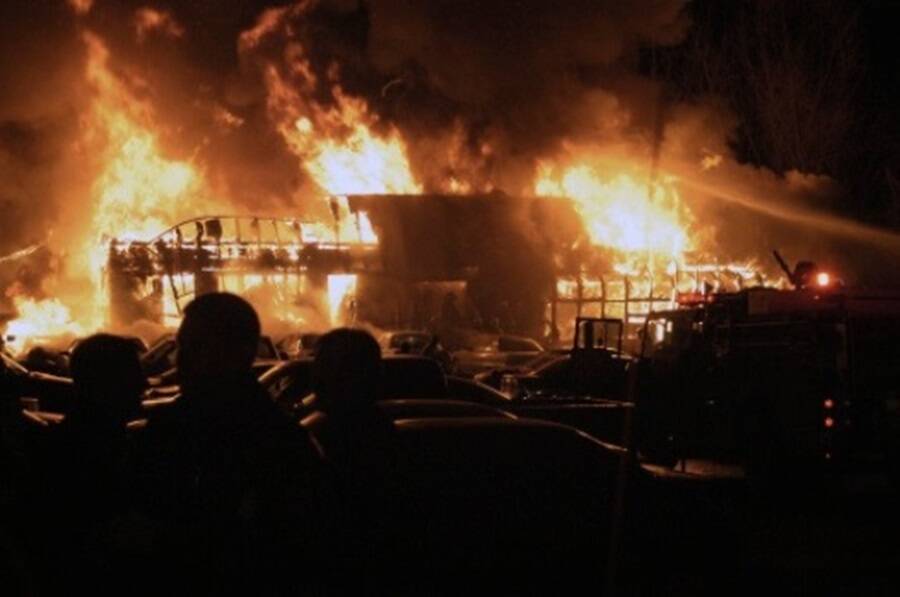
National Association of State Fire MarshalsFlames engulf The Station nightclub in West Warwick, Rhode Island, on Feb. 20, 2003, as the fire spreads rapidly.
On the night of Feb. 20, 2003, The Station nightclub fire in West Warwick, Rhode Island, became one of the deadliest in U.S. history.
When the band Jack Russell’s Great White took the stage just after 11 p.m., the crowd of more than 400 was looking forward to a thrilling performance. However, moments later, disaster struck.
The pyrotechnics that were set off during the opening song ignited the foam insulation on the walls and ceiling of the venue. The flames spread rapidly, leaving those inside barely 90 seconds to escape. The building had four doors, but the majority of the concertgoers tried to leave through a narrow hallway that led to the main entrance, causing a crowd crush that blocked the exit.
Within minutes, 100 people were dead, and 230 more were injured. Of the 462 people inside the venue when the fire started, just 132 escaped unscathed — and those who survived were left with deep emotional scars.
The Troubling Lead-Up To The Station Nightclub Fire
The Station nightclub in West Warwick, Rhode Island, was originally built as a gin mill in 1946. The building later served as a restaurant, tavern, and pub at various times before it was transformed into a nightclub in the early 1990s. The venue changed hands often over the years, and in 2000, the Derderian brothers, Jeffrey and Michael, took ownership.
The structure first caught on fire in 1972, when the space held a restaurant called Julio’s. Thankfully, no one was inside at the time, but the building was damaged.
In the months leading up to The Station nightclub fire in 2003, the venue was inspected twice by the local fire marshal.
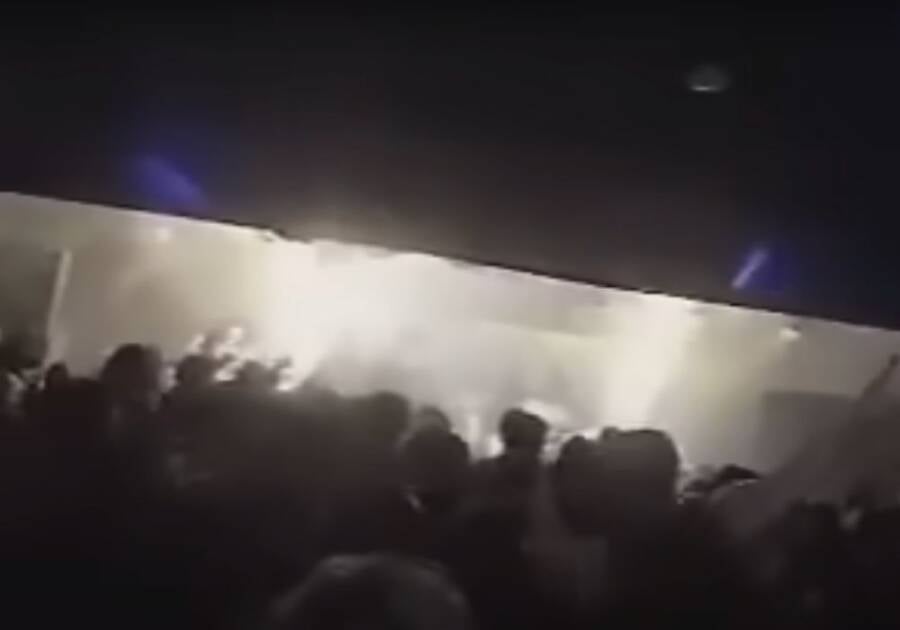
YouTubeThe first few seconds of The Station nightclub fire, before the crowd began to panic.
Both times, the nightclub was cited for minor code violations, such as a door that opened in the wrong direction and missing bulbs in exit signs. Shockingly, however, the inspectors missed one major issue: the use of highly flammable polyurethane foam for soundproofing. This foam was against code, but it wasn’t mentioned in the reports.
Before the fire, The Station was known for hosting ’80s hard rock bands and tribute acts. Pyrotechnics were commonly used during these shows, and there had been no issues in the past. Just a few months before the fire, a Kiss tribute band had even set off fireballs during their performance without any problems. But on Feb. 20, 2003, things went terribly wrong.
How A Night Of Rock Music Turned To Horror
The evening of Feb. 20, 2003, began like any other, with 462 people packed into the small club, far exceeding its 404-person capacity. Just after 11 p.m., Jack Russell’s Great White took the stage. As the tour manager, Daniel Biechele, set off pyrotechnics, sparks hit the foam around the drummer’s alcove — and flames erupted.
At first, the crowd thought it was part of the show. However, it didn’t take long for the situation to turn terrifying. Within 30 seconds, lead singer Jack Russell noticed the flames, stopped playing, and said into the mic, “That’s not good.” Thick black smoke started to fill the nightclub.
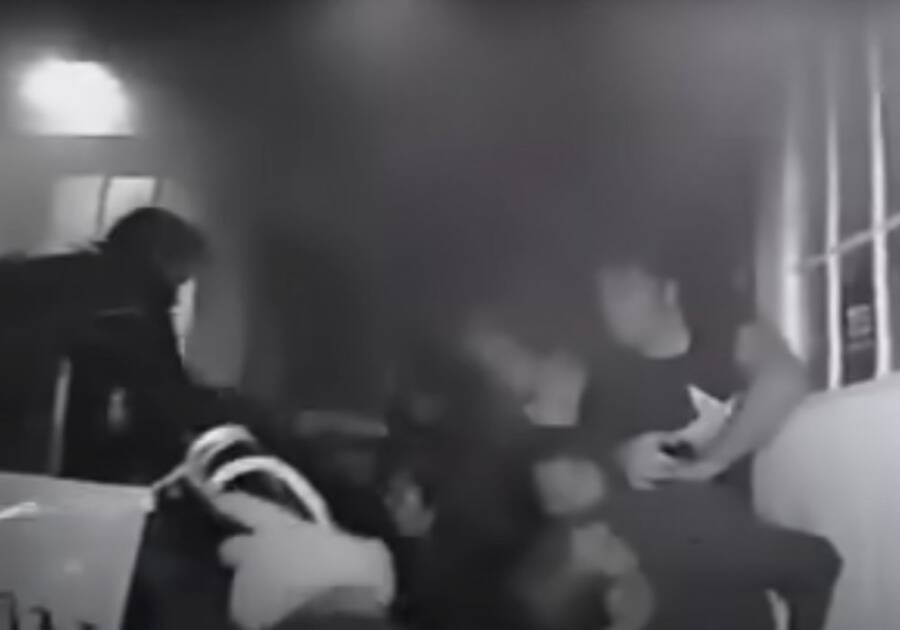
YouTubeConcertgoers who were trapped in The Station nightclub fire try to squeeze through the venue’s front doors.
The fire alarm began blaring 40 seconds after the blaze began, and panic took over. The crowd started running toward the exits and away from the inferno. There were four doors in the club, but in the rush to escape, most people raced to the front door through which they had entered. It was located at the end of a narrow hallway, and the mass of bodies all trying to squeeze through at the same time led to a crowd crush. What’s more, visibility was near zero, and people quickly became disoriented.
Just 90 seconds after The Station nightclub fire started, conditions in the venue were unsurvivable. Anyone who hadn’t made it out yet likely never would. According to the University of Illinois Fire Service Institute, the majority of the 100 deaths occurred just inside the front door, where victims succumbed to smoke inhalation as they tried to squeeze through the mass of bodies.
The entire building was completely engulfed in flames in only six minutes.
Inside The Desperate Rescue Efforts
As Brian Butler, a videographer for WPRI-TV in Providence who was at the concert the night of the fire to film a piece about nightclub safety, told CNN on the scene of the tragedy, “At first, there was no panic. Everybody just kind of turned. Most people still just stood there.” Butler made it out safely, but he was one of the lucky ones.
“I turned back,” he continued. “I went around back. There was no one coming out the back door anymore. I kicked out a side window to try to get people out of there. One guy did crawl out. I went back around the front again, and that’s when you saw people stacked on top of each other, trying to get out the front door. And by then, the black smoke was pouring out over their heads.”
The first 911 calls came within 40 seconds of the fire starting at 11:07 p.m., and the West Warwick Fire Department was on the scene by 11:13 p.m. More trucks followed as firefighters from nearby towns rushed to help. Across the street, the Cowesett Inn became an emergency triage center, where survivors and burn victims were treated on the spot.
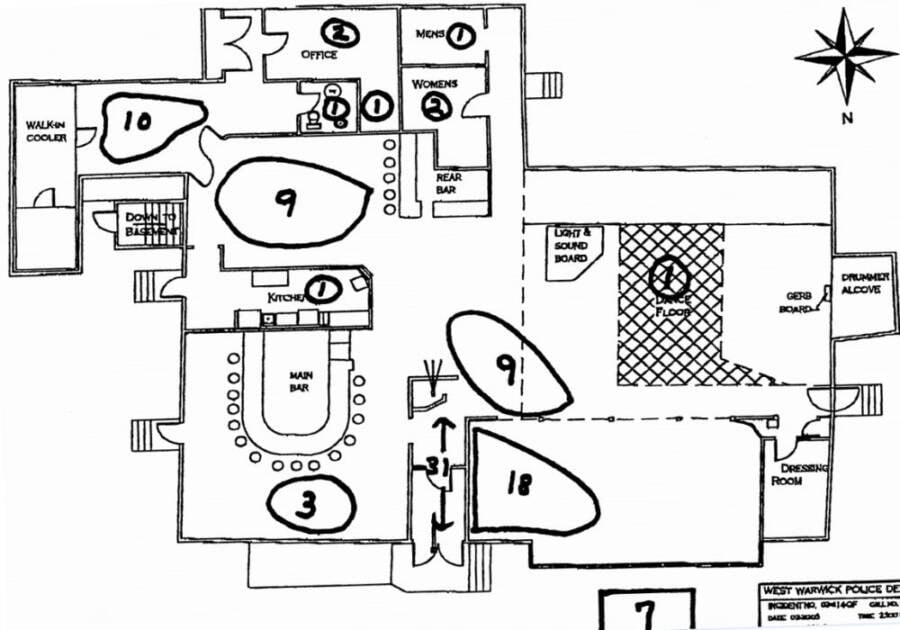
Public DomainA map that shows how many victims were found in each section of the nightclub. The narrow hallway leading to the front door held 31 bodies.
The rescue efforts were chaotic and dangerous. The roof of The Station collapsed, making it even harder for firefighters to reach those still trapped inside. Nearby, Kent Hospital was overwhelmed with patients after taking in as many as possible. By 1:30 a.m., the fire was under control, but the damage was already done.
Of the 462 people inside, 100 didn’t make it out, including four employees of The Station. Ninety-six victims died at the scene, while four more succumbed to their injuries in the hospital. Another 230 people were injured, with many suffering severe burns and smoke inhalation. Among the dead were the band’s lead guitarist, Ty Longley, and local DJ Mike “The Doctor” Gonsalves, who had been emceeing the event.
In the aftermath of The Station nightclub fire, investigators uncovered a devastating series of oversights that had contributed to the disaster.
Why The Station Nightclub Fire Was A Preventable Tragedy
One of the most disturbing stories to emerge from The Station nightclub fire was that of Gina Russo and her fiancé, Freddy Crisostomi. They were standing just in front of the stage when the fire broke out. As Russo told Boston’s Wicked Local in 2010, “[Freddy] knew there was something wrong right away. We left our drinks on the stage and went to a side door about three steps to where we were standing. But a bouncer there tried to tell us the door was only for the band and he wouldn’t let us leave.”
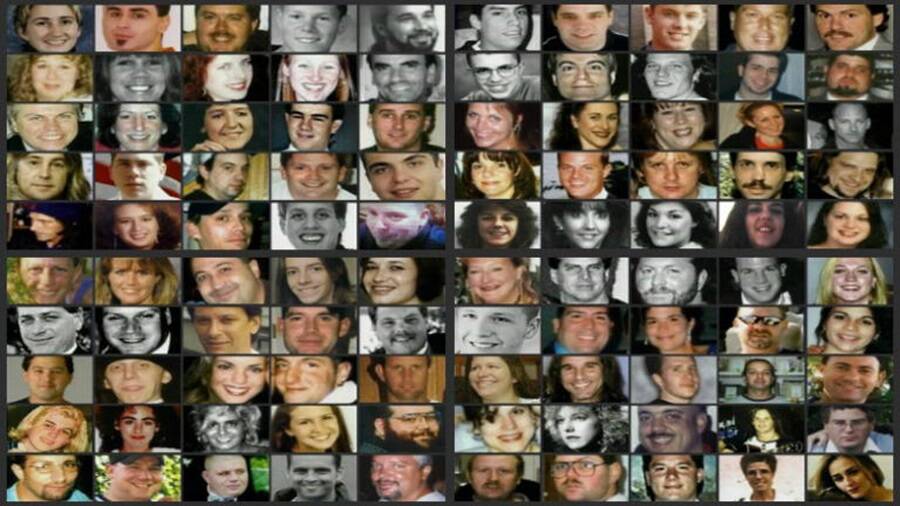
WPRI-TVThe 100 victims of The Station Nightclub fire.
Russo continued, “By that time the curtain of a drape in the drummer’s alcove was on fire, so we turned and tried to make it to the front entrance. We got to the middle of the club and Fred started to feel sick. He pushed me in the middle of the back as if to say ‘Go,’ and that was the last contact I ever had with him.” Tragically, Freddy Crisostomi did not survive the fire. Russo woke up from a medically-induced coma 11 weeks later with third- and fourth-degree burns covering her body.
It’s unknown how many others were turned away from this side door, but that’s not the only reason The Station nightclub fire was so deadly. The venue had no sprinkler system. Because of its age, it wasn’t legally required to have one. In addition, the fire alarm wasn’t connected to the fire department, meaning emergency responders only learned of the fire from frantic 911 calls and an officer who happened to be in the vicinity. By the time firefighters arrived, it was too late.
In the wake of the tragedy, survivors and the families of victims sought justice. Daniel Biechele, the tour manager who lit the pyrotechnics that sparked the fire, was charged with and pleaded guilty to 100 counts of manslaughter. The Derderian brothers also faced charges, but they took plea deals. Civil lawsuits led to a $176 million settlement with the club owners, the band, and the manufacturers of the flammable foam.
In response to the disaster, Rhode Island passed new fire safety laws, which banned pyrotechnics in venues holding fewer than 300 people and required sprinkler systems in all clubs with a capacity of more than 150 people. The goal was to prevent such a tragedy from ever happening again — but for those affected by The Station nightclub fire, the damage was already done.
For years after The Station nightclub fire, mourners left crosses, flowers, and notes where the venue once stood, turning it into a makeshift memorial. One hundred wooden crosses, each made from remnants of the burned building, were placed at the site as a tribute to those lost. In 2017, it was officially turned into The Station Fire Memorial Park. Every year, families and community members gather there to remember their loved ones.
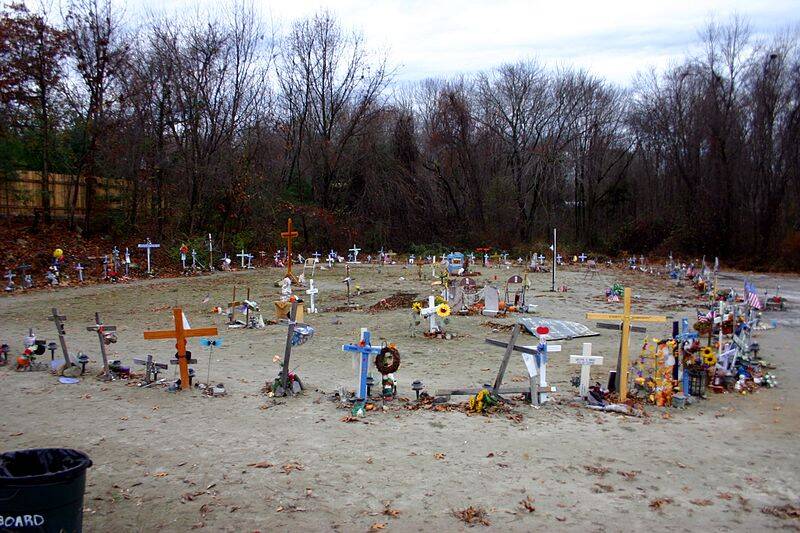
Public DomainOne hundred wooden crosses stand as a tribute to the victims at The Station Fire Memorial Park.
Rhode Island Senator Jack Reed paid tribute to the victims, survivors, and their families on the 20th anniversary of the fire. “A love of live music brought them together that night, and the tragedy that unfolded was unfathomable,” Reed said, as reported by local station ABC6. “We’re a small state, a tight community. Twenty years on, we still carry the collective loss, grief, and pain from that horrific night.”
Though the tragedy prompted changes in fire safety laws, The Station nightclub fire will never be forgotten, and its impact is still felt today. What was meant to be a night of music and fun turned into one of the deadliest nightclub disasters in U.S. history.
After learning about The Station nightclub fire, read about the Great Chicago Fire of 1871. Then, check out photos from the Cocoanut Grove nightclub disaster.





